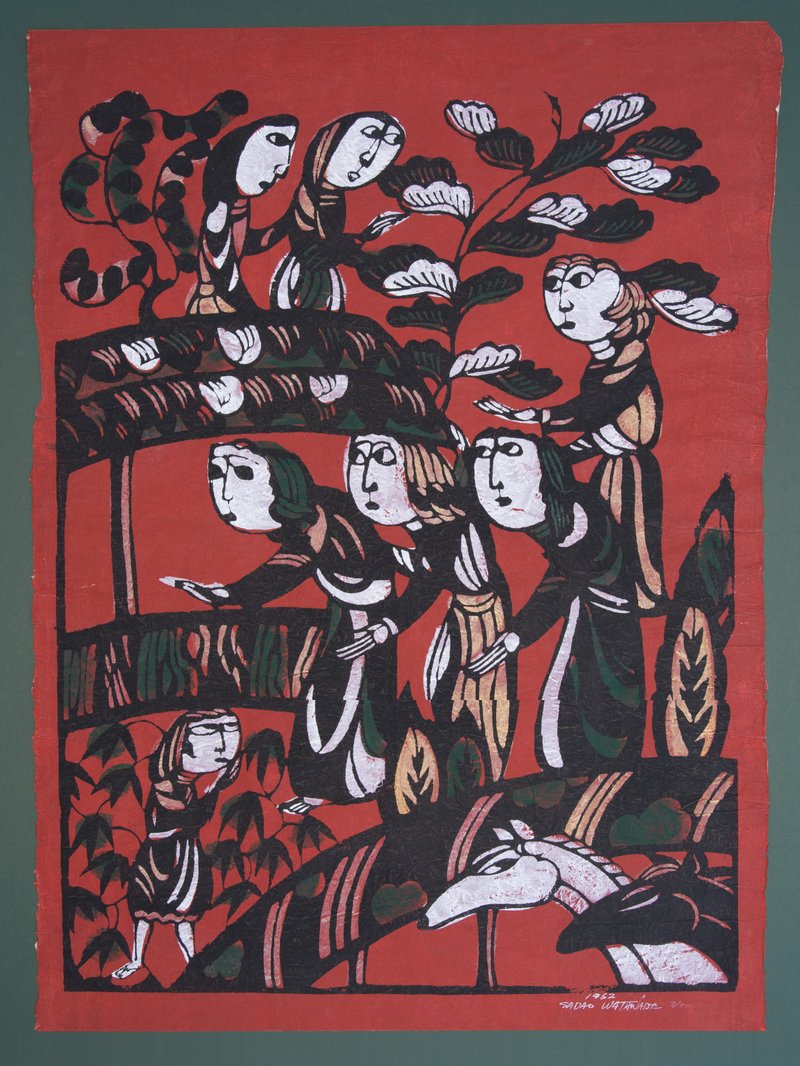
Sadao Watanabe (1913-1996)
Stencil: natural pigments and ink on paper
80 x 59 cm
1962
Methodist Modern Art Collection
No. WAT/2010/2
Image Copyright © Trustees for Methodist Church Purposes. The Methodist Church Registered Charity no. 1132208
Biblical commentary
Luke 2:7–10 Matthew 2: 16 John 13:2b – 9, 12- 14 Matthew2: 1–2, 11
Watanabe completed several series of nativity prints. In this picture people gather to see the new born Jesus who is, himself, not shown. They express, perhaps, serious purpose rather than great excitement. It is not clear if they are shepherds or other members of the local community. For us they represent ordinary Christians coming to show homage to the Christ child.
Commentary based on A Guide to the Methodist Art Collection.